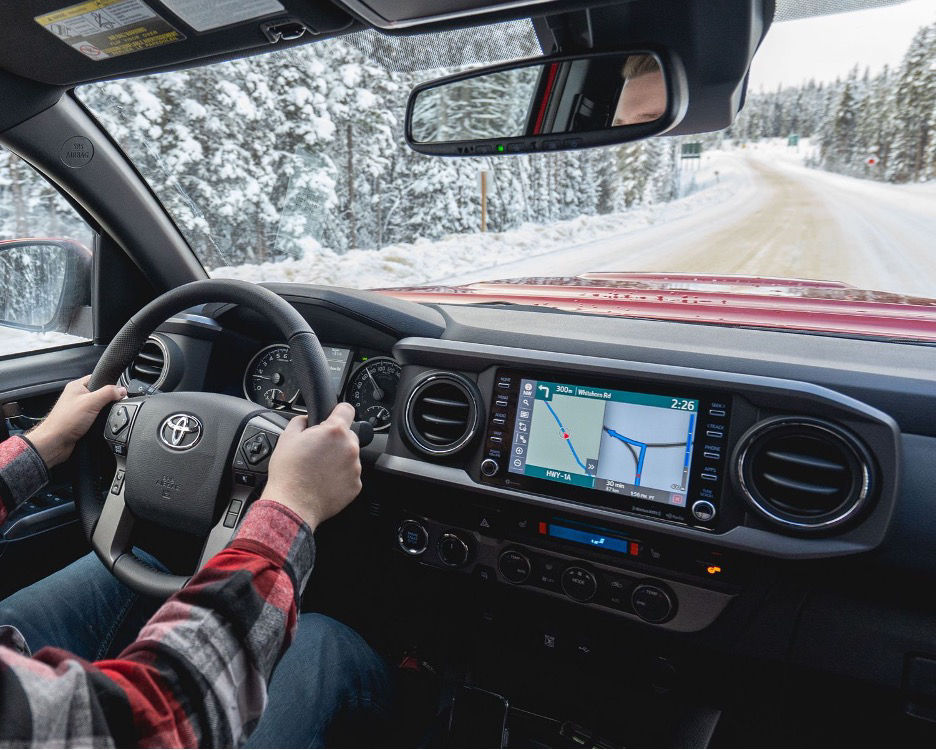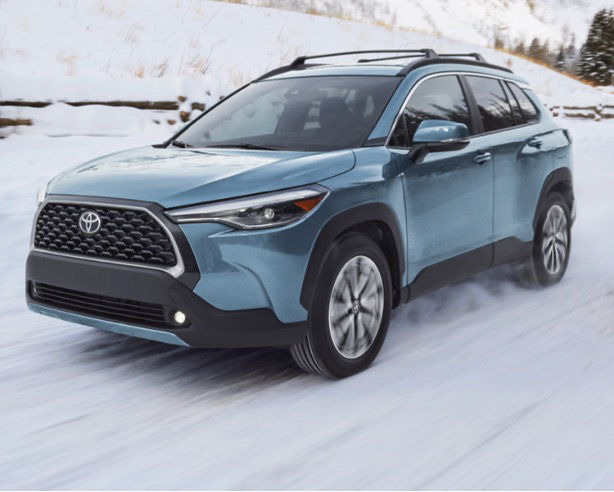Select a province & language
Entrance to this website assumes you have read and agree to these Legal Terms and Conditions and the Privacy Policy.
Entrance to this website assumes you have read and agree to these Legal Terms and Conditions and the Privacy Policy.
No matter the season, staying safe on the road should always be our top priority as responsible drivers. Winter conditions can add some challenges to that task but keeping these simple driving safety tips top of mind will help ensure you and your passengers enjoy the ride with peace of mind.
When it comes to winter driving safety, choosing the right tires for your vehicle makes a big difference. Winter tires are designed to perform optimally in both snowy conditions and cold temperatures. With single-directional tread patterns, they push snow and ice away while you drive. They’re also made of softer rubber and deeper sipes that help to maintain flexibility and a firm grip on roads through the winter season.
DID YOU KNOW? All season tires aren’t made for every season in every country. Canadian winters are some of the coldest and harshest in the world, so winter tires are the optimal choice for safe driving in the conditions we face on daily drives. Plus, winter tires are legally required for driving in specific provinces. In Quebec, it’s legally required to equip your vehicle with winter tires until March 15 and for those in British Columbia, winter tires or chains are legally required on most routes until April 30.
If something unexpected happens on the road, it’s important you have everything you need while you wait for help to arrive. We recommend bundling these items together and keeping them in the trunk, so you’re prepared just in case:
The general rule of thumb on the road is ensuring there’s at least a 2-second distance between you and the vehicle ahead of yours. In the winter, especially during snowy weather, we recommend increasing your distance to account for any slippery surprises on the road.
Cruise control can be a great tool to use on dry, straight, empty highway stretches, but there are times when it’s not a safe option: on winding roads, during heavier traffic periods and of course, during winter driving conditions. Basically, you should not use cruise control anytime you can’t maintain a steady speed. Cruise control on slippery roads can lead to skidding and other issues.

Snowplows are the ultimate road safety tool, clearing the way for drivers to proceed on snowy days. To ensure everyone’s safety, follow these steps when sharing the road with a snowplow:
Toyota University Trained Technicians recommend vehicle maintenance every 6 months or 8,000 km, whichever comes first. Following your maintenance schedule throughout the year will help ensure your vehicle runs at its best in every season.
DID YOU KNOW? Toyota Service Connect can help you stay up to date on your vehicle maintenance. Request monthly vehicle health reports, get alerts about your warning lights and receive regular vehicle maintenance notifications, all conveniently delivered to your mobile device through the Toyota App.
If your gas tank is near empty, there is a chance of condensation building up in the line. That water contamination can lead to freezing during cold spells, which can decrease fuel efficiency or even damage your engine.
Crafted to take on the winter elements, Toyota Genuine Winter Wiper Blades feature a wedge-shaped deflector that was designed to help remove snow and accumulated ice in just a few swipes. Winter wipers are also bigger and sturdier than conventional wipers and are covered by a thick layer of rubber so the blades don’t get clogged with ice. Be sure to clean snow and ice off your windshield with a brush before driving to protect your wipers and ensure maximum visibility.

When it comes to winter driving, you never know what the day holds in terms of weather conditions, road conditions and the drivers around you. Being prepared for the unexpected will help you conquer winter driving with peace of mind on every drive. Toyota Roadside Assistance can cover a battery boost, winch your vehicle if it’s stuck in the snow, bring you fuel if you run out and more.
DID YOU KNOW? If you’re a new Toyota driver, your vehicle is covered with complimentary Roadside Assistance for 3 years.
Sometimes, especially if we’re rushing to get somewhere important, we make the choice to drive when we should really pull over and wait out heavier snowstorms. Consider leaving much earlier than you usually would to account for any unpredictable weather. It may be an obvious tip, but pulling over when it’s time for a break is some of the best winter driving advice out there.

Winter driving can lead us to some magical places indeed – think skating rinks, ski slopes and hot springs. Taking steps to arrive everywhere safely will make your winter adventures possible and help everyone enjoy the best of the season.